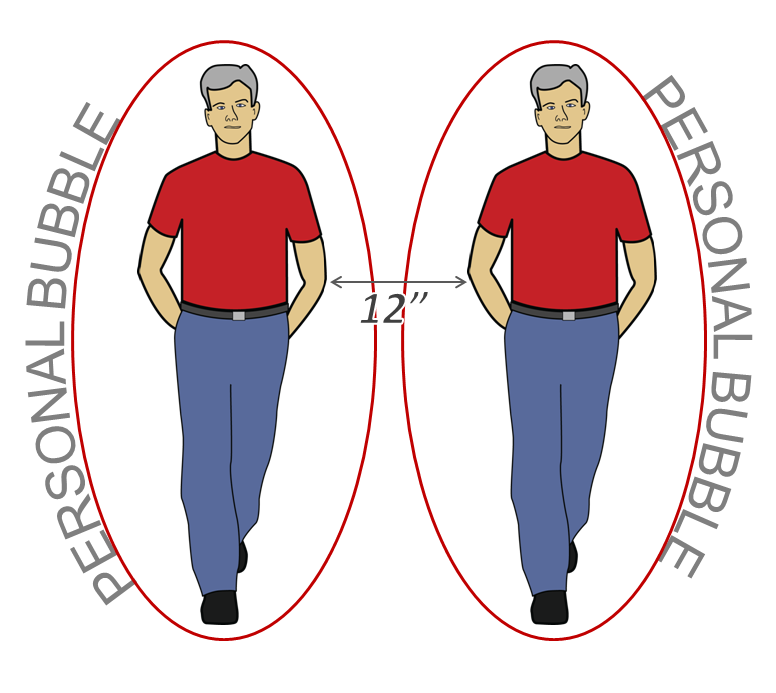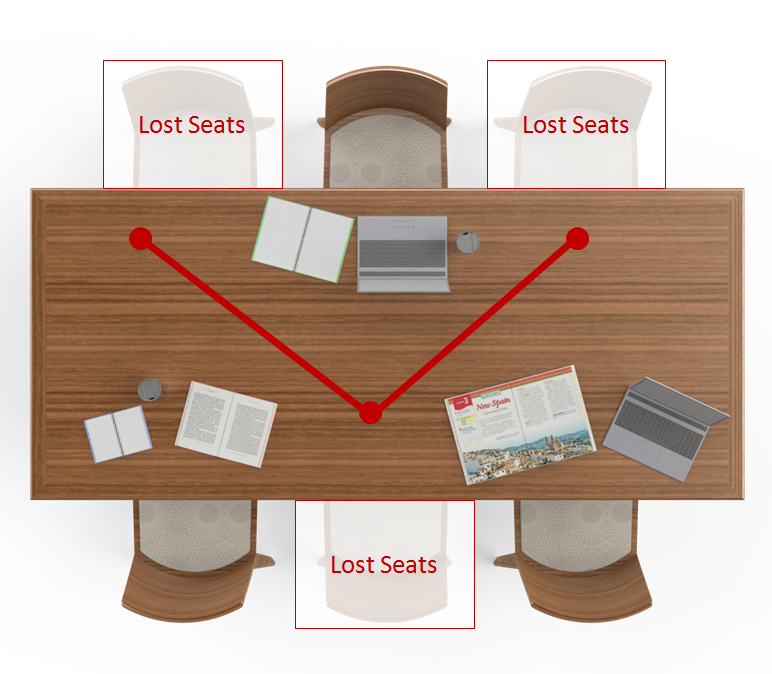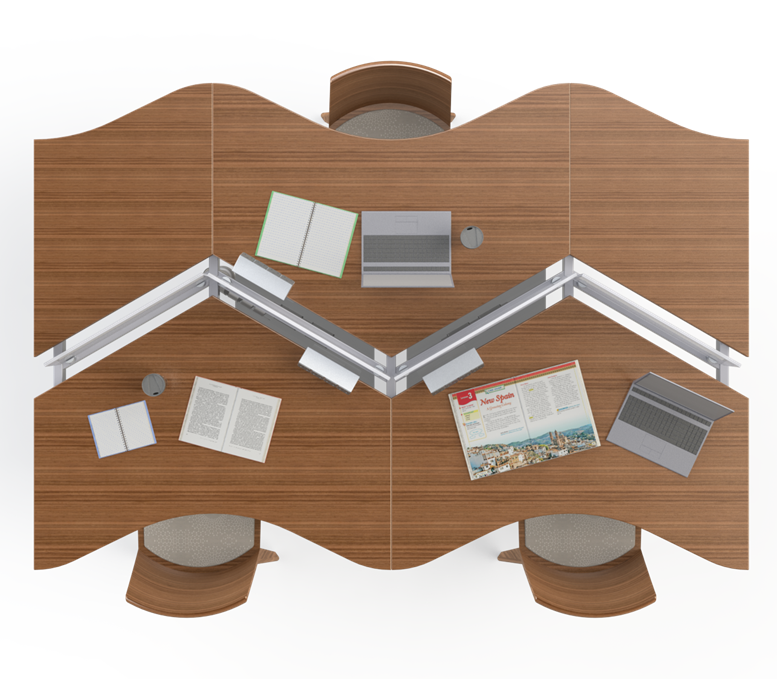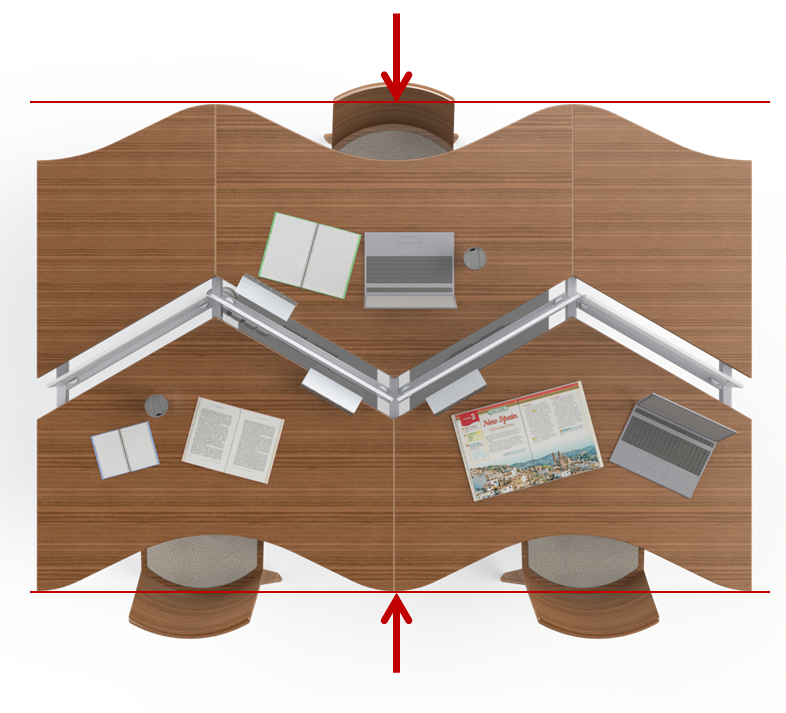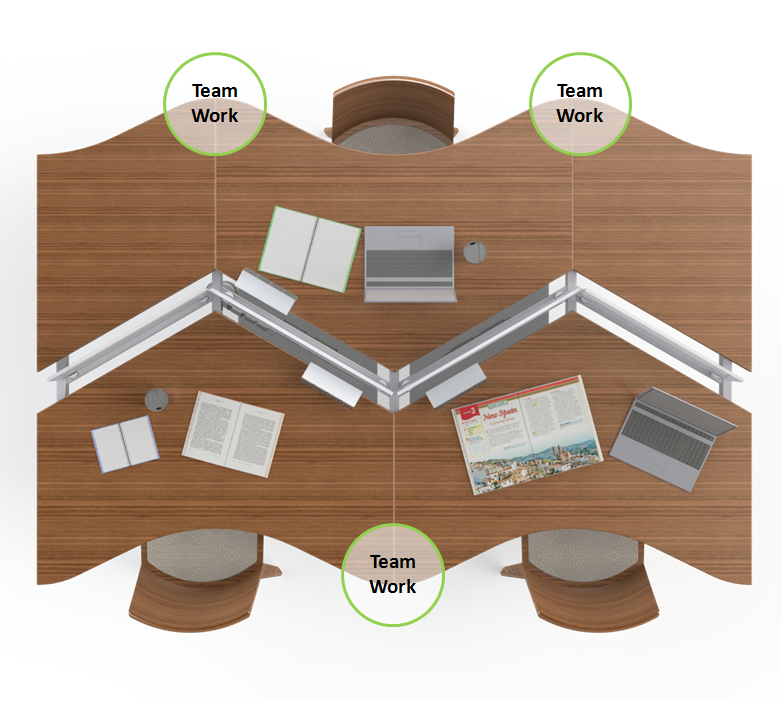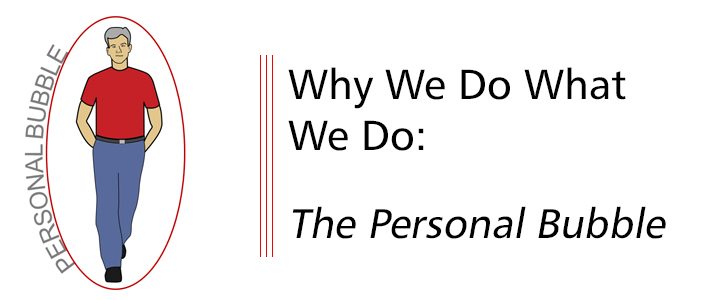
Designing with space in mind means more than designing for maximizing square footage – designing with space in mind considers the personal space of individuals using the area. In this segment of our Designing for Human Behavior series, we’ll discuss the “personal bubble” each of us has, how that changes when interacting in public spaces, and how to design spaces that provide comfort with the personal bubble in mind.
Every individual has their own personal space needs, and they change depending on the environment. For example, someone’s personal bubble in a subway next to a stranger is vastly different from their personal bubble at home with a family member. This is normal, since humans feel differently about our security and personal space depending on our surroundings. A stranger sitting nearby has infiltrated your typical personal space and feels like a threat, where a family member in the same position is (usually) not a threat. Typically, in public surrounded by strangers, personal bubble needs are a minimum of 12 inches. As others encroach upon this 12 inch bubble, we become stressed.
We see this personal bubble theory come to life with traditional library tables. Typically, the first seat to become occupied at an empty table is the middle seat. In this middle seat, users have table space on both sides and in front of them to buffer strangers and maintain a personal bubble. The next seats to fill are those on the corners, but on the opposite side of the table. For these seats, there is a middle seat buffer, and the table space in front creates distance between the user in the middle seat across from them.
When these seats are filled and the library reaches max capacity, the personal bubble is no more. Patrons may even skip the library and look for a coffee shop with more room. At the same time, if all seats aren’t filled, they are essentially lost seats – no one uses them and the chairs become useless. The challenge becomes how can libraries both maintain individual personal bubbles as well as prevent lost seats in libraries? How can manufacturers provide a product in libraries that work with the natural need for a personal bubble? The answer lies in the zig-zag table.
Wavy tables, zig zag desks, whatever their name—designers love them. While their shape makes them interesting and breaks the monotony of a space, the shape is more than a simple design feature. Its main functional purpose is to place a user inside the table – that’s right, inside the table. Let us explain.
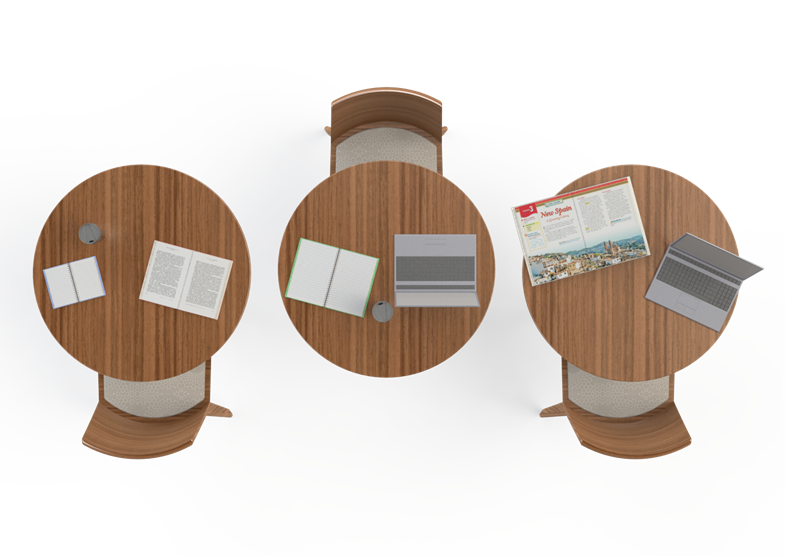
A mistake all users tend to make with a zig-zag table is placing seats at the peaks of the table. This becomes a problem because it puts a seat where there are no safety surrounds, leaving users exposed which reduces focus. These peaks can be used as team work spots and collaborative areas, though, with individuals sitting together in their own seats but finding common area between them with the table peaks.
Maintaining a personal bubble in a public area can be challenging, especially when looking for seating and accommodations at library tables. Humans naturally fear the loss of their sense of security. By incorporating elements into a space such as zig-zag tables and staggered configurations, libraries create spaces that are fully utilized while preserving and respecting individual personal bubbles. This leads into a broader discussion in the next installment about our instinct as humans to seek haven and security beyond the personal bubble.
